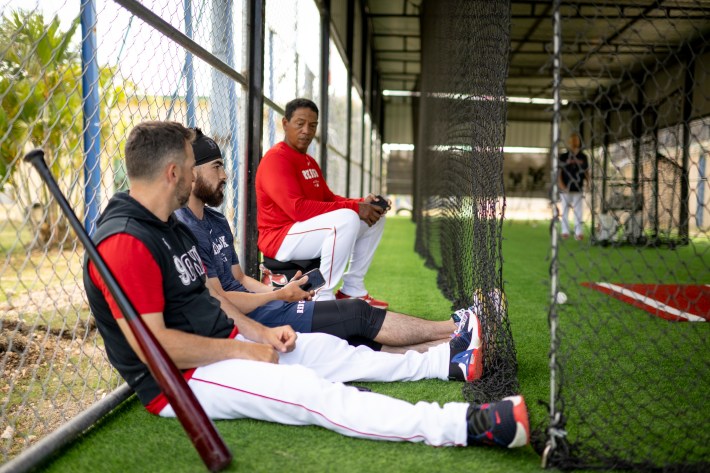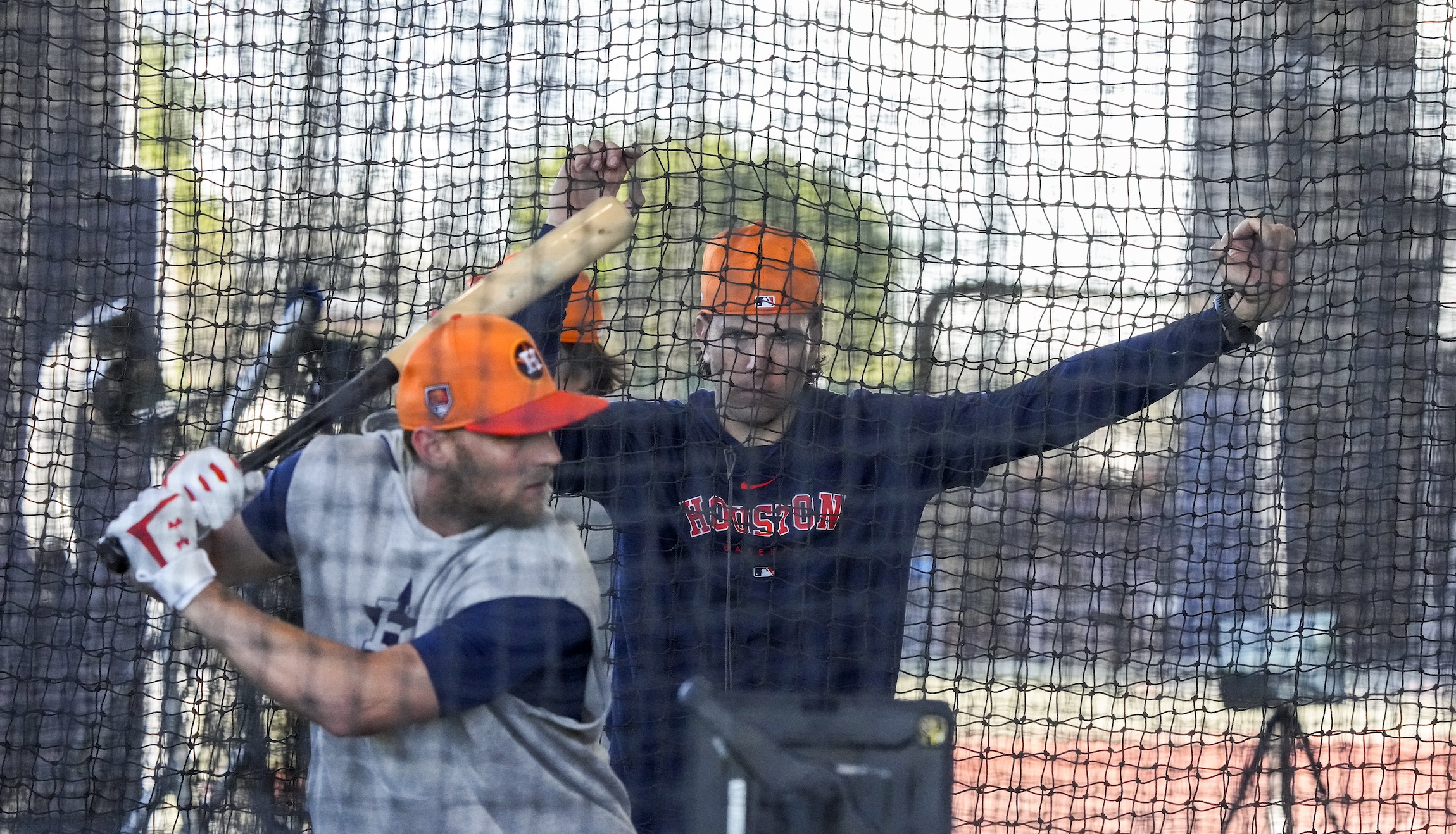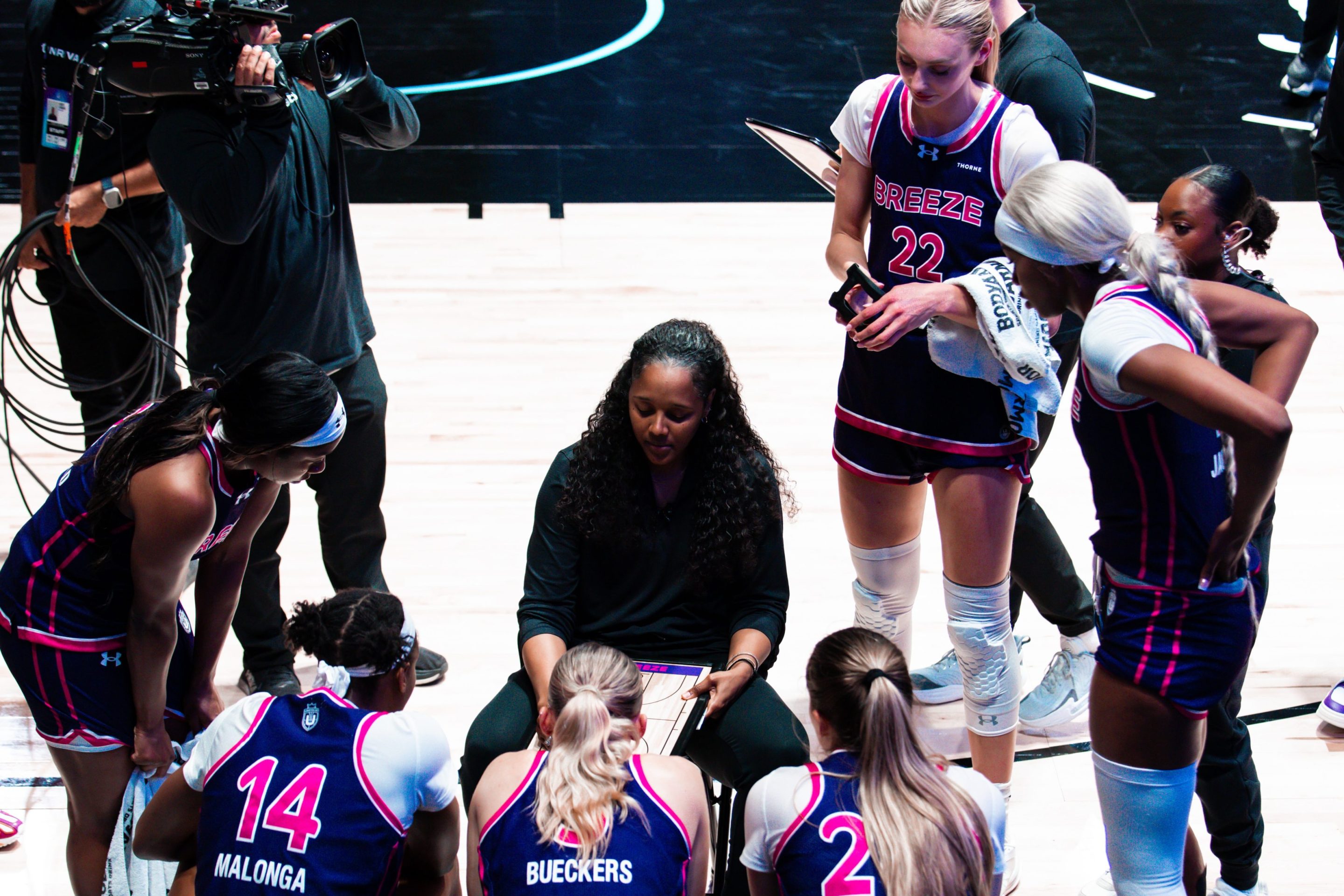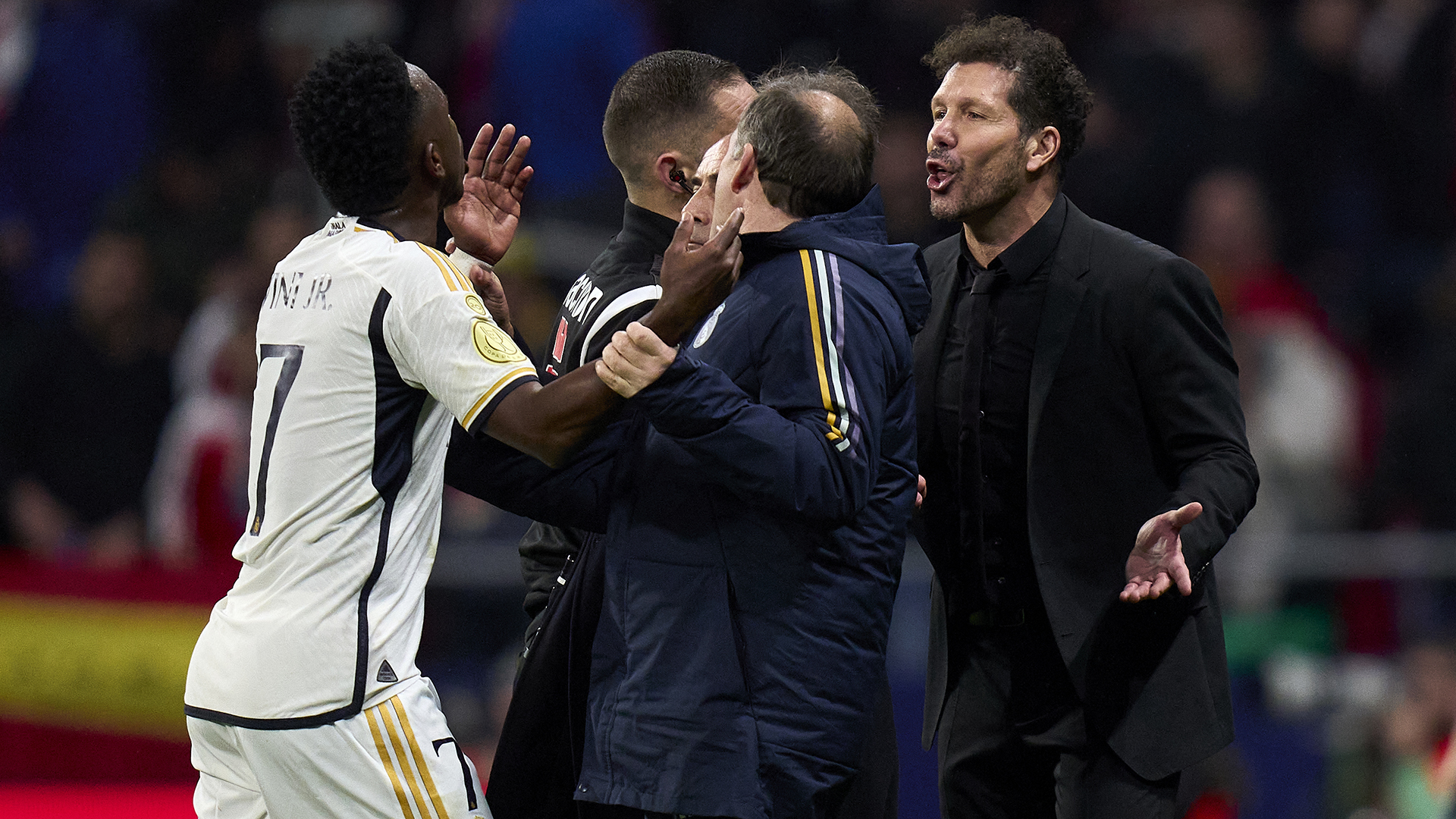Things were not working for Brent Strom. It was late June of 1973 and the young Cleveland left-hander was slumping. The Yankees had just handed him another loss, dropping his record to 1-8 and raising his ERA to 4.95. Fortunately, he had a Hall of Famer for a pitching coach.
In a matter of weeks, Warren Spahn would be in Cooperstown, where his 363 wins, 2,583 strikeouts, and high-stepping delivery would be enshrined in bronze. But immediately in front of Spahn was a 24-year-old who needed help. Spahn had just the solution, one quite conveniently drawn from his own experience on the mound.
“He fucking told me I had to kick my leg up higher,” Strom recalls, “and I about pulled a hammy doing it.”
Suffice to say, it didn’t work. Sitting in the Diamondbacks dugout last month, Strom told me this story as a parable about myopic coaching philosophies. Few in the game could offer as expansive a perspective. The Arizona pitching coach is now 75 years old and considered one of the top pitching minds in baseball. He’s achieved that reputation thanks to a relentless curiosity and an aversion to outdated pitching dogma. But back then, in just his second year as a big-leaguer, he kicked his leg higher because an all-time great told him to do so. If it hurt and was ineffective, well, who was he to question Warren Spahn?
Similar episodes can be found in the histories of coaches across baseball. For Royals hitting coach Alec Zumwalt, it was the demand that he stop using an open stance, even though he believed he saw the ball better that way. For Diamondbacks hitting coach Joe Mather, it was a directive—from a coach who’d never seen him hit—to spread his feet and chop down at the ball. At some point in the playing careers of many big-league coaches, an old-school coach dictated they make a certain change, just because.
“Everybody that played before 2010 probably could say the same thing,” says Cubs pitching coach Tommy Hottovy.
Today’s coaches don’t begrudge their predecessors, who were just doing their best with what they had at the time. But things don’t work the old way anymore. No longer can a big-league hitting or pitching coach be an autocrat, and successful ones know better than to try. There is simply too much available information—pitch and batted ball metrics, biomechanical tracking systems, copious research about every minute wrinkle of the game—for one person to claim any special knowledge.
In fact, expertise has been so democratized that the complexion of the job has changed completely.
Many players now have not one pitching or hitting coach but several: those who work for their team, and one or more they work with privately over the winters and sometimes throughout the season. The interplay among the coaches can be harmonious, especially as more of the instructors who pioneered the game’s now-dominant techniques and philosophies have become part of the establishment. But even then, having to maintain so many different relationships adds a new facet to any coach’s responsibilities.
Coaches must keep abreast of not only their players’ swings and deliveries, but also the third-party coaches who are influencing them. When coach and guru disagree, that conflict must be finessed, not bigfooted. If mishandled, relationships can quickly sour and careers can falter. Forcing a player to pick between you and their guru is a great way to lose a player’s trust.
MLB clubs once sought to control all this: who was working with whom and on what. But the private coaching horse now is so far out of that barn, there’s no choice left but to let it roam, and to try to communicate and collaborate with it. Many current coaches have risen to prominence amid this new dynamic, while some older coaches have been forced to shake their old beliefs and adapt. Some who couldn’t or wouldn’t are now out of the game. And some of those are relieved.
All are grappling in some way with this shift in the game: These days, even when you’re the coach, you’re just one voice among many.
When Diamondbacks general manager Mike Hazen oversaw the Red Sox farm system in the early 2010s, he noticed that more and more of his minor-leaguers were showing up to camp with new swings, the products of instruction from coaches he wasn’t paying. Private coaches with unknown credentials were meddling with the development of his players, and Hazen’s initial reaction was territorial.
“It was, ‘Is that your guy or are we your guy?’” he recalls. “The risk was confusion.”
Hazen was hardly alone in his first-blush skepticism. In the mid-2010s, as Driveline Baseball kicked off a velocity training and pitch design revolution and as veterans like Marlon Byrd began spreading Craig Wallenbrock’s gospel of swing optimization, the MLB establishment did what it usually does, and met innovation with incredulity. These facilities were taking players—broken ones at first, then increasingly more and more established and successful ones—and preaching concepts that went against the staid orthodoxy of the big leagues.
Those concepts—weighted ball-throwing programs, a swing engineered for loft, the value of pumping nasty breaking stuff over “establishing the fastball,” among many others—were cutting edge. Just as foreign to many in MLB was who was promulgating them. When retired hitting coach Dave Magadan was first hired by the Diamondbacks in 2016, he says he was “taken aback” that several of his hitters were working closely with their own private swing doctors in the winter and even during the season. Cardinals hitting coach Turner Ward had a similar first response.
“I was kind of against it,” Ward says, “because sometimes too much information can be detrimental.”
But the information was irreversibly out there to be found. If you have it, players will come. If you don’t, they’ll look elsewhere. The more players discovered it and then had big-league success—stars like J.D. Martinez and Justin Turner—the more teams adopted the practices they’d initially resisted, often by bringing those private coaches in-house. Martinez’s personal swing consultant Robert Van Scoyoc is now the Dodgers’ hitting coach.
Such shifts could prompt a bit of soul-searching. When the Rangers made seismic changes to their player development department in 2019, Texas assistant GM Ross Fenstermaker says, “they were really uncomfortable for certain people here.” As the game’s outsiders won more influence, both inside and outside MLB organizations, longtime insiders now faced a learning curve they probably never expected in their later years. Once a prime source of baseball know-how, their lived experience was made redundant by the proliferation of hard data. More painfully in some cases, it had also disproved some of their long-held practices, like the efficacy of a chop-down swing or the notion that starting pitchers couldn’t survive with a two-pitch arsenal.
Those coaches who survived did so by stowing their egos. “I think pride gets in the way,” says Ward, who is 58 and has coached for four MLB clubs since 2013. “Even for me. I want to feel like I have the answers, I want to feel like I’m the one who can help. But that’s almost foolish for me to think that way.”
That battle is largely over, although Reds pitching coach Derek Johnson says “there are still some [coaches] who fight and almost reject some of the information.” But for the most part, the luddites are gone. “Have they been weeded out? Yeah,” he says, “if they decided to stop learning.”
It’s a question every major-league coach now asks: Who do you work with in the offseason?
Some coaches like Strom and Johnson prefer to use their players as conduits to their private coaches, while others like Mather like to arrange direct meetings of the minds on Zoom. The goal is to ensure both the team and the guru are working toward the same goals and speaking the same language, a task that becomes less and less fraught as once-new ideas become more mainstream and private coaches build up reputable track records.
If there’s inevitable friction, coaches say, it’s because a private facility and an MLB staff tend to chase related but distinct goals. Offseason work is about targeted, measurable outcomes achieved in a lab setting, like jumps in bat speed or pitch movement and velocity—as Guardians pitching coach Carl Willis puts it, finding “the best shit you can rip.” That players often rip better shit is undeniable, but MLB coaches stress a more holistic approach. Private coaches can spend all winter tinkering under the hood to make the car go faster, but big-league coaches have to keep it roadworthy through the marathon of Le Mans. And it’s the big-league coaches who must confront, and ultimately be judged by, the on-field results.
That means gently vetting whatever advice players are getting from elsewhere, and it’s not uncommon for MLB coaches to have to correct misguided suggestions. “I have plenty of players who come to me and say, ‘Hey, my dad told me my hands were too high in my delivery last night,’” Hottovy says.
To navigate those instances requires hard data, and lots of patience. “What players want is the truth,” Hottovy says, and the truth requires an arsenal of facts and not a quiver of opinions: “Here’s what the data says,” and not, "My eyes see…” There’s no putting a foot down (or raising a leg kick), no “My way or the highway.” There’s only offering your best-supported argument and letting a player do what they feel is warranted. It’s hard to back off sometimes, but it’s the player's career.
“Just being a watchman,” Ward says. “That’s hard because everything in me wants to help. Sometimes, the help is a silent voice.”
Conscientious players and their private coaches try not to overstep. “I don’t want my hitting coaches—who I love here—to ever think that I am choosing somebody over them,” says Diamondbacks slugger Christian Walker, who’s worked with a private coach for years. Red Sox hitting coach Pete Fatse got his start privately training veteran shortstop Nick Ahmed and, wary of big-leaguing the big-league coaches, always worked with Ahmed offsite and not in the big-league cage during the season. “I tried to stay in the background,” Fatse says.

Magadan, though, breaks private hitting coaches into two distinct categories. There are the ones who know their stuff, like Van Scoyoc. Then, he says, there are “the clowns.”
Magadan is retired now because of the clowns. He watched too many promising hitters, including at least one All-Star, pursue big changes sold by unproven instructors only to sidetrack or even ruin their careers. Magadan is not down on all private coaches—he says that when he coached Martinez in 2017, the slugger and Van Scoyoc could not have been more collaborative—but he soon wearied of gurus who hoarded the attention of his hitters.
“It’s certainly less difficult being a hitting coach from November to February than it is from February to October. You’re not dealing with any failure. It’s all feel-good,” Magadan says. “I started finding myself being the bad cop.”
He’d tell hitters when he thought they were going too far astray, but he felt that they tuned him out, which still rankles. “You’re going to listen to some guy who has never been in the arena? It’s not just listening to him, but only listening to him,” Magadan vents. He was willing to share the ear of his players but says navigating all those little instructional fiefdoms ultimately “took all the joy out of the job.”
With no job to gain or preserve, Magadan has less incentive to be diplomatic. But even those on the forefront of the game’s changes acknowledge that the dynamic can be sensitive. “There’s only room for one guru in any room at any given time,” Strom says. “If you have more than one, you can really get conflicting ideas.”
One day late in spring training, Rangers shortstop Corey Seager emerged from the batting cage lugging several tripods affixed to cameras and tablets, instruments he’d used to record every angle of his session. All the information contained in them was destined for former big-leaguer Shawn Wooten, Seager’s private hitting coach.
Wooten will get similar updates every day throughout the season, placing him just as in the loop as Rangers bench coach and offensive coordinator Donnie Ecker. Part of what Ecker must coordinate is the goings-on his players have with several outside instructors, but that doesn’t bother him. It may be different than coaching used to be—Ecker says changes were forced down his throat by “every single one” of the coaches he had when he played—but everyone’s just trying to get better.
“It’s really simple: Here are the rules, here’s how it’s going,” Ecker says. “You can blame and complain or you can adopt the changes and figure out how to be the best in the world at it.”
This new aspect of the job is here to stay. When hiring for these positions—and there are more of them, with coaching staffs swelling across the league in recent years—teams ask about hitting and pitching philosophies but also about how coaching candidates will forge and maintain outside relationships. Mather was asked about it when he became the assistant hitting coach in Cincinnati in 2020 and again when he interviewed for the head job in Arizona two years later. That skill set is “probably a prerequisite at this point,” says Hazen. And though it may be a headache at times, most agree the change is largely for the better.
By putting more heads together, players benefit from diverse perspectives and individualized instruction. Teams receive far more information about what their players are up to over the winter, sometimes plugging directly into data streams provided by training facilities. And with perennially high turnover among MLB coaches—after the 2021 season, for example, more than half the league was seeking a new hitting coach—players can maintain a fruitful coaching relationship that persists even through regime changes.
“An old-school mindset was [that] the cream will always rise to the top,” Zumwalt says, but the sport has never really been that meritocratic. “There’s a lot of players who didn’t rise to the top because they weren’t given freedom to do their thing.” Now they have that freedom, and if that means their coaches are sometimes herding cats, that’s a small price to pay for measurable improvement on the mound or at the plate. Coaches who paint with a broad brush tend to work in a limited range of colors.
But if the old-school model ever makes an unlikely comeback, Strom can offer at least the pitchers a way out. It’s an old trick, but an effective one. The next time a coach tries to tell a hurler to do something just because, Strom suggests using what he calls the nuclear option: “Fuckin’ say, ‘My arm hurts.’”






